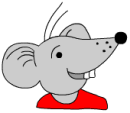 Free maths worksheet from mathsblog and mathsgogogo.co.uk
Free maths worksheet from mathsblog and mathsgogogo.co.uk
Here is a way of identifying shapes that you do not often see in worksheets, but is considered important in the maths curriculum. It is known as identifying shapes by using a binary tree.
A binary tree leads you through a series of questions, which can only be answered yes or no, each question question narrows down the number of possible correct answers, until there is only one left. Binary trees are often used in science but they can also be used in maths.



 Writing large numbers in words is not easy but by the end of year 5 many children will be confident enough to read numbers in the millions. In the past, in the UK, a billion has been considered as a million million, but in the USA a thousand million has been thought of as a billion. This seems to be the norm in the UK these days as well so Neptune at 4 500 000 000 km from the sun can be said as “
Writing large numbers in words is not easy but by the end of year 5 many children will be confident enough to read numbers in the millions. In the past, in the UK, a billion has been considered as a million million, but in the USA a thousand million has been thought of as a billion. This seems to be the norm in the UK these days as well so Neptune at 4 500 000 000 km from the sun can be said as “ This is a good free maths worksheet to encourage systematic ordering of data. Lists of highest mountains, longest rivers and largest turtles are given, but they are not in order. There is a definite technique in efficiently putting these in order as it is very easy to miss one and not so easy to rearrange them if you are doing it on paper!
This is a good free maths worksheet to encourage systematic ordering of data. Lists of highest mountains, longest rivers and largest turtles are given, but they are not in order. There is a definite technique in efficiently putting these in order as it is very easy to miss one and not so easy to rearrange them if you are doing it on paper! There are two parts to this free maths worksheet on classifying shapes, both involving Venn diagrams. The idea is to put either the names of shapes or drawings of shapes in the correct areas of the Venn diagram.
There are two parts to this free maths worksheet on classifying shapes, both involving Venn diagrams. The idea is to put either the names of shapes or drawings of shapes in the correct areas of the Venn diagram. Another worksheet with a ‘wheel’ of questions to practise subtraction of whole tens. year 5’s should find this quite easy and it is worth considering what approach they take to finding all the possible questions.
Another worksheet with a ‘wheel’ of questions to practise subtraction of whole tens. year 5’s should find this quite easy and it is worth considering what approach they take to finding all the possible questions.